Ukraine’s One-Shot Wonder Weapon: The AT4
September 13th, 2022
8 minute read
Since Russia launched its unprovoked and unwarranted invasion of Ukraine on February 24 of this year, the Kremlin has lost a lot of tanks. Drones have been credited with racking up the kills, but the vast majority of Russian tanks have been destroyed by man-portable anti-tank weapons.
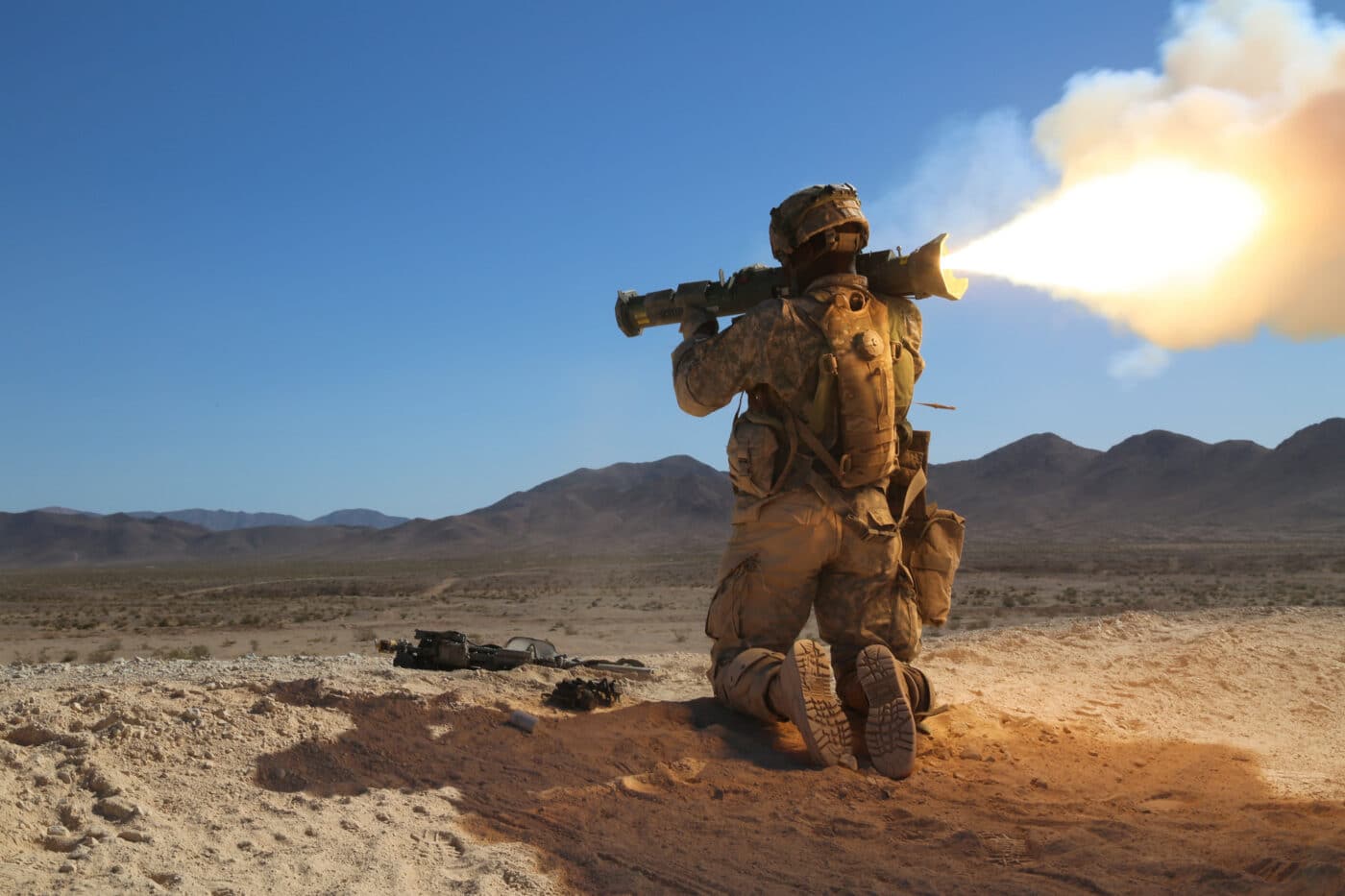
The American-made FGM-148 Javelin and the British-produced NLAW have been used to great success, but another weapon has earned its time in the spotlight — the Swedish AT4, an unguided, man-portable, single-shot, disposable, recoilless smoothbore anti-tank weapons. As with the Javelin and NLAW, Ukrainians have used it to target and successfully take out the best the Kremlin has to offer.
The AT4 is now one of the most commonly used light anti-tank weapons in service around the globe.
In U.S. military service it is designated the M136 AT4. Its name is actually a homophone of the caliber of the weapon, namely 84mm (3.31-inch) — as in “A-T-4.”
Cold War Origins
One notable fact about the AT4 is that it was developed by a nation that hasn’t actually fought in a foreign conflict since the Napoleonic Wars — apart from sending peacekeeping forces during the Cold War, including to the Congo in the 1960s, and more recently as part of the coalition to Afghanistan.
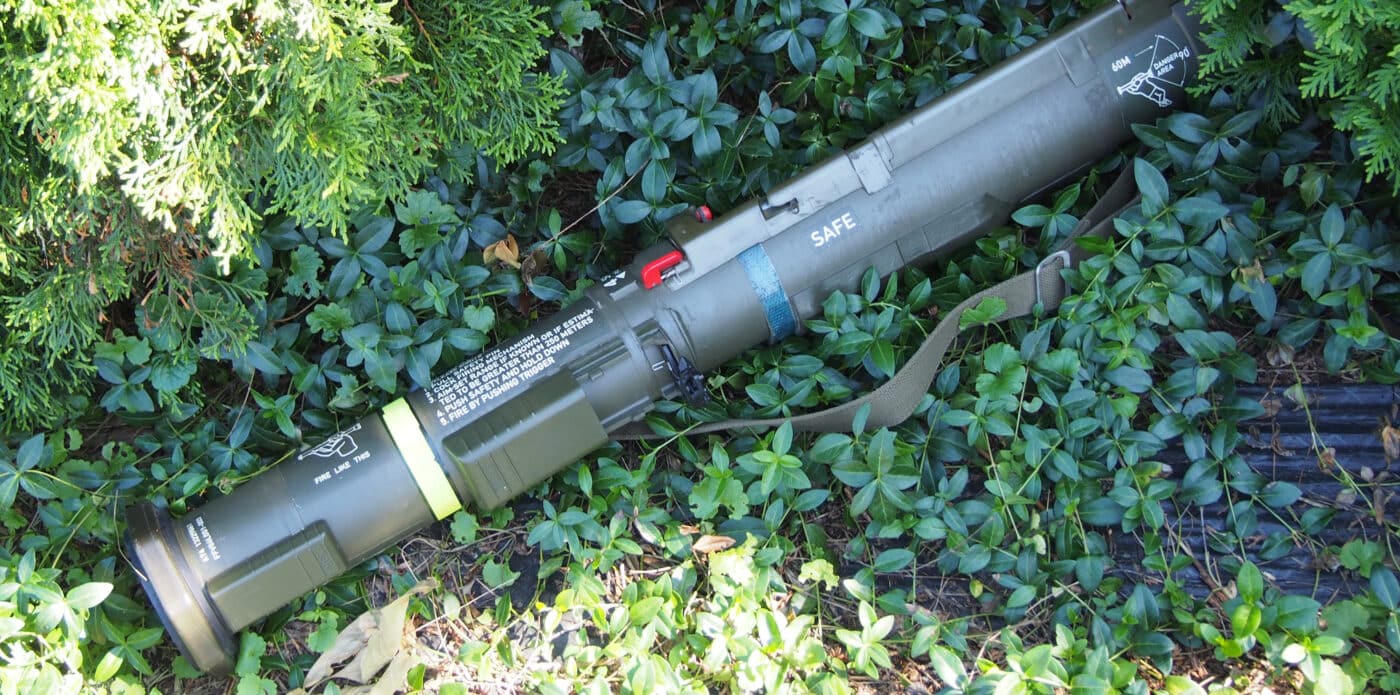
Despite sitting on the sidelines during both the First and Second World Wars, during the Cold War, the Swedish Air Force had become one of the most prominent in Europe due to fears of a Soviet invasion. In addition, Sweden’s ground force was also equipped with domestically made small arms as part of an effort to maintain its neutrality.
Among the weapons developed for use by its land units was the Miniman 74-mm Pansarskott m/68, a disposable single-shot 74mm unguided anti-tank smooth bore recoilless weapon. Similar to the United States military’s M72 LAW or French Sarpac, it was armed with a HEAT (high-explosive anti-tank) round that was used to strike stationary targets out to 250 meters (820 feet), while it could penetrate up to 340 mm (13-inches) of rolled homogeneous armor.
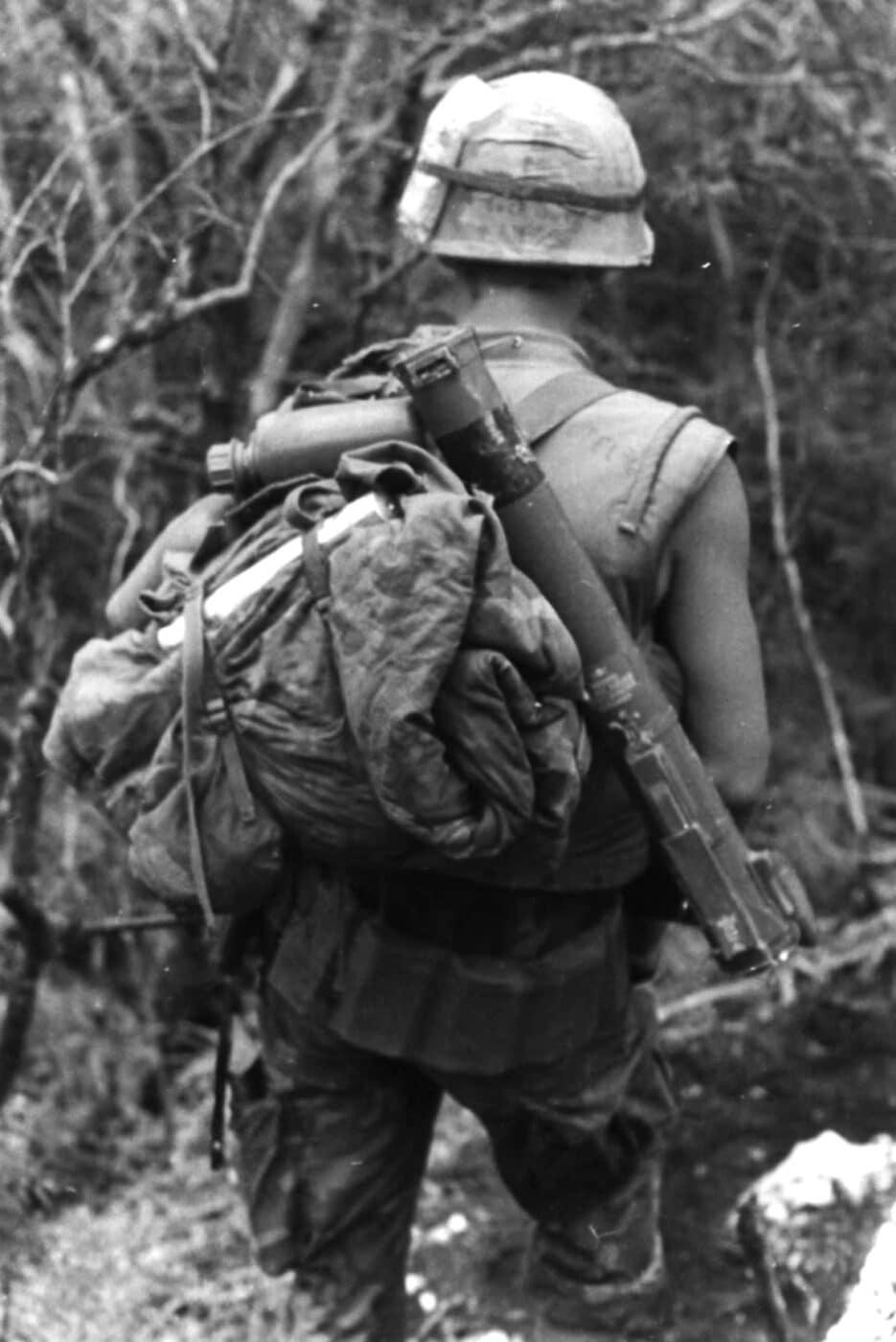
Interestingly, the Miniman was exported to other neutral nations during the Cold War including Finland, which adopted it as the 74 KES 68 Miniman); and Austria as the PAR 70 (Panzerabwehrrohr 70). The Miniman 74-mm Pansarskott m/68 reportedly never saw use in actual combat, and its only actions were in training exercises. The weapon was seen to have a few shortcomings, notably a tremendous backblast that limited where it could be employed. In the 1980s, development began on the Miniman’s replacement, which became the AT4.
Originally developed by Förenade Fabriksverken (FFV) and manufactured at their facility at Zakrisdal, Karlstad, Sweden, the AT4 took many design elements from the Carl Gustaf 8.4cm recoilless rifle, but as a disposable weapon built around a reinforced smoothbore fiberglass outer tube.
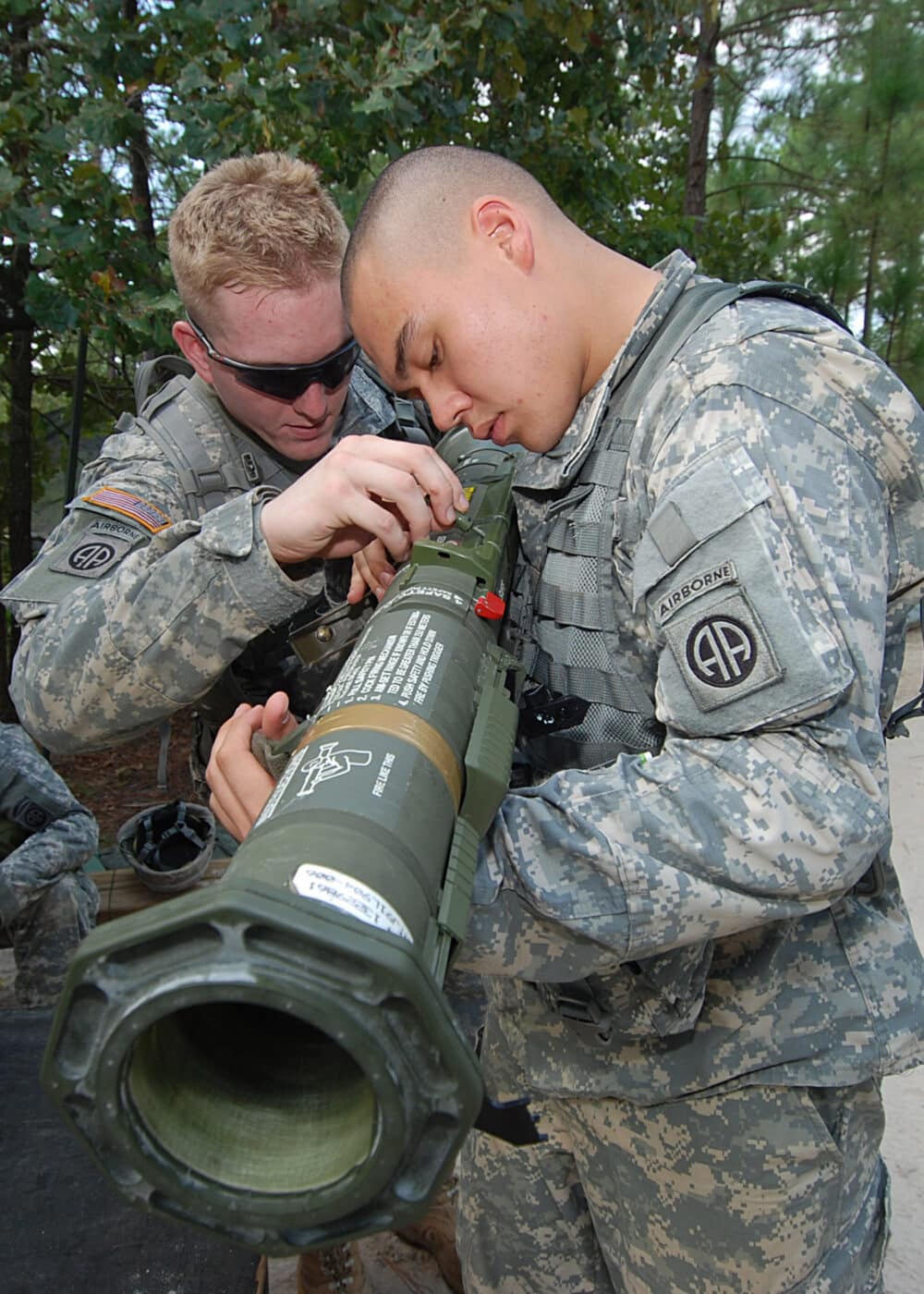
Now produced by Saab Bofors Dynamics, the man-portable AT4 has been far more successful on the export market, and has even become one of the most common light anti-tank weapons used by militaries around the world. Its success is credited to the fact that the AT4 can be easily operated by a single soldier, and depending on the particular rocket model, the AT4 has a range of 200 to 600 meters, and it can penetrate roll homogenous armor (RHA) up to 420 mm (17.5-inches).
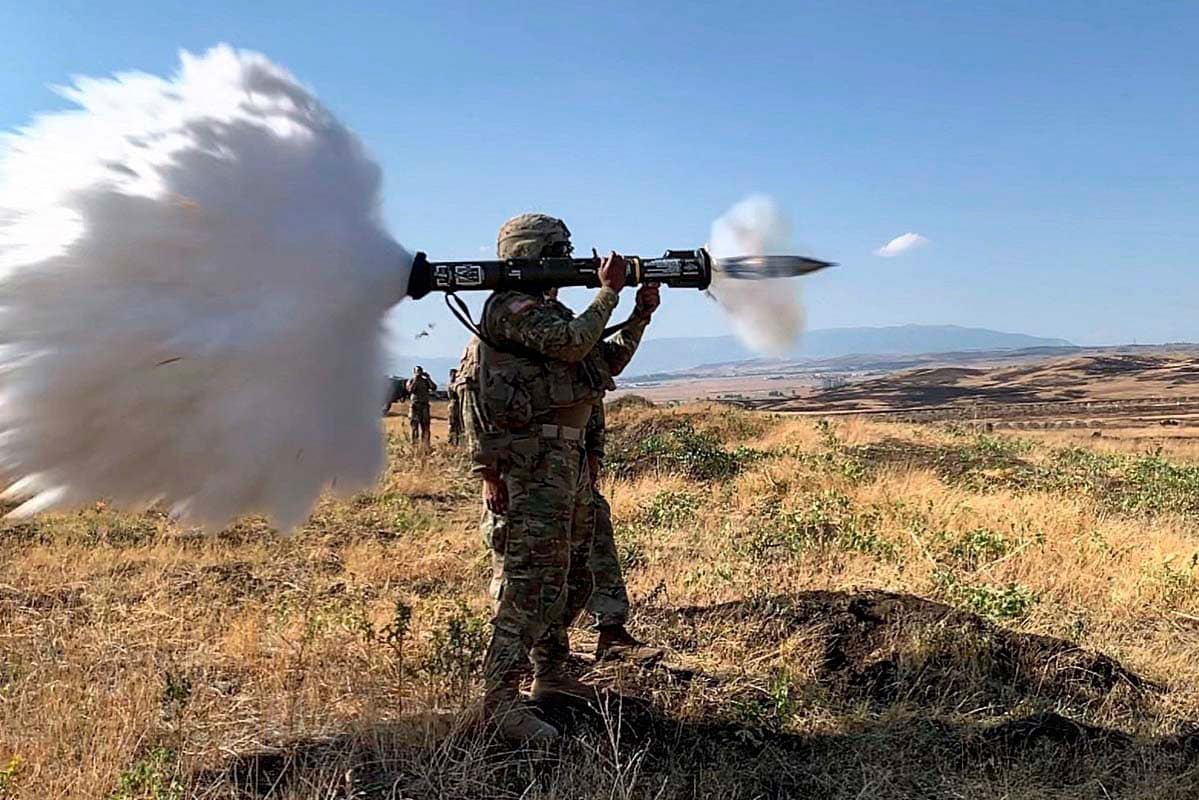
Moreover, unlike the older Miniman 74-mm Pansarskott m/68, the AT4 is produced with different projectiles including HEAT, AST (anti-structure tandem-warheads), ER (extended range), HE (high-explosive), HP (high penetration), and RS (reduced sensitivity). The AST warheads were developed specifically for use in urban warfare situations, while the high-penetration projectiles can reportedly pass through 500 to 600 mm of RHA.
The projectiles are preloaded into the launcher, so the downside is that operators can’t change out the round if the situation changes. In addition, unlike the American Javelin, the AT4 still produces a large backblast that could harm the operator or friendly forces if used in a confined space. To address that fact, a special variant, the AT4-CS (confined space) version has been introduced. It reportedly utilizes a saltwater countermass to absorb the backblast and to slow down the pressure wave. Yet, even the standard model is considered to be far safer to use than the preceding Miniman 74-mm Pansarskott m/68.
U.S. Adoption
The AT4 has found favor around the world, but what is also notable is that in 1982, the weapon was chosen for use with the United States Army even before it was adopted by the Swedish military. Throughout 1983, the United States Army tested six different anti-tank platforms and had found that the FFV AT4 met all the requirements needed to replace the aging M72 LAW.
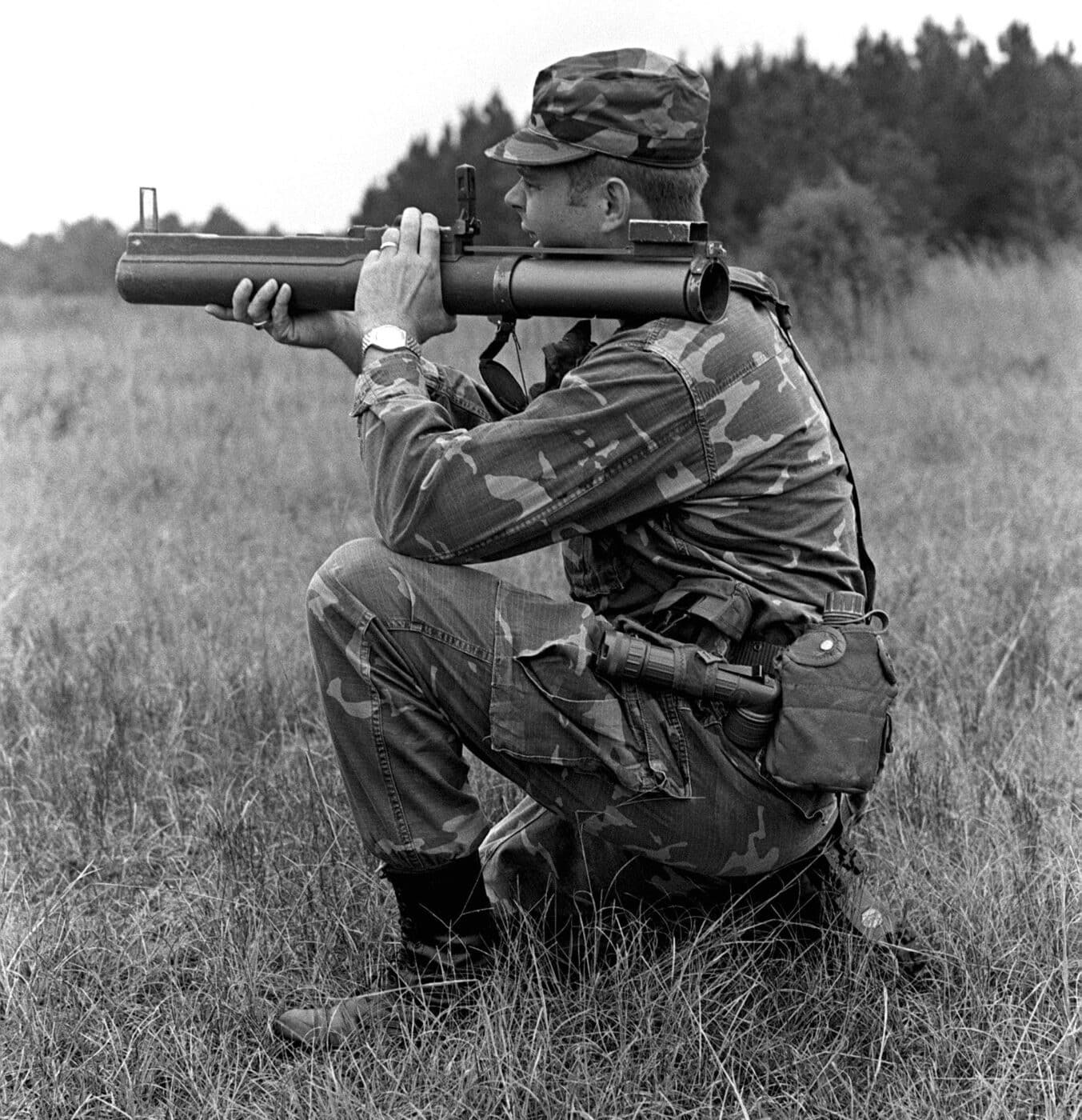
The U.S. Army’s M136 variant featured altered launch tube bumpers, sights and slings — and these were found to improve the weapon enough that those “Americanized” modifications were incorporated in the version adopted by the Swedish Army. However, the Swedish version also employs a folding hand grip to help steady the AT4 when it is being aimed and fired.
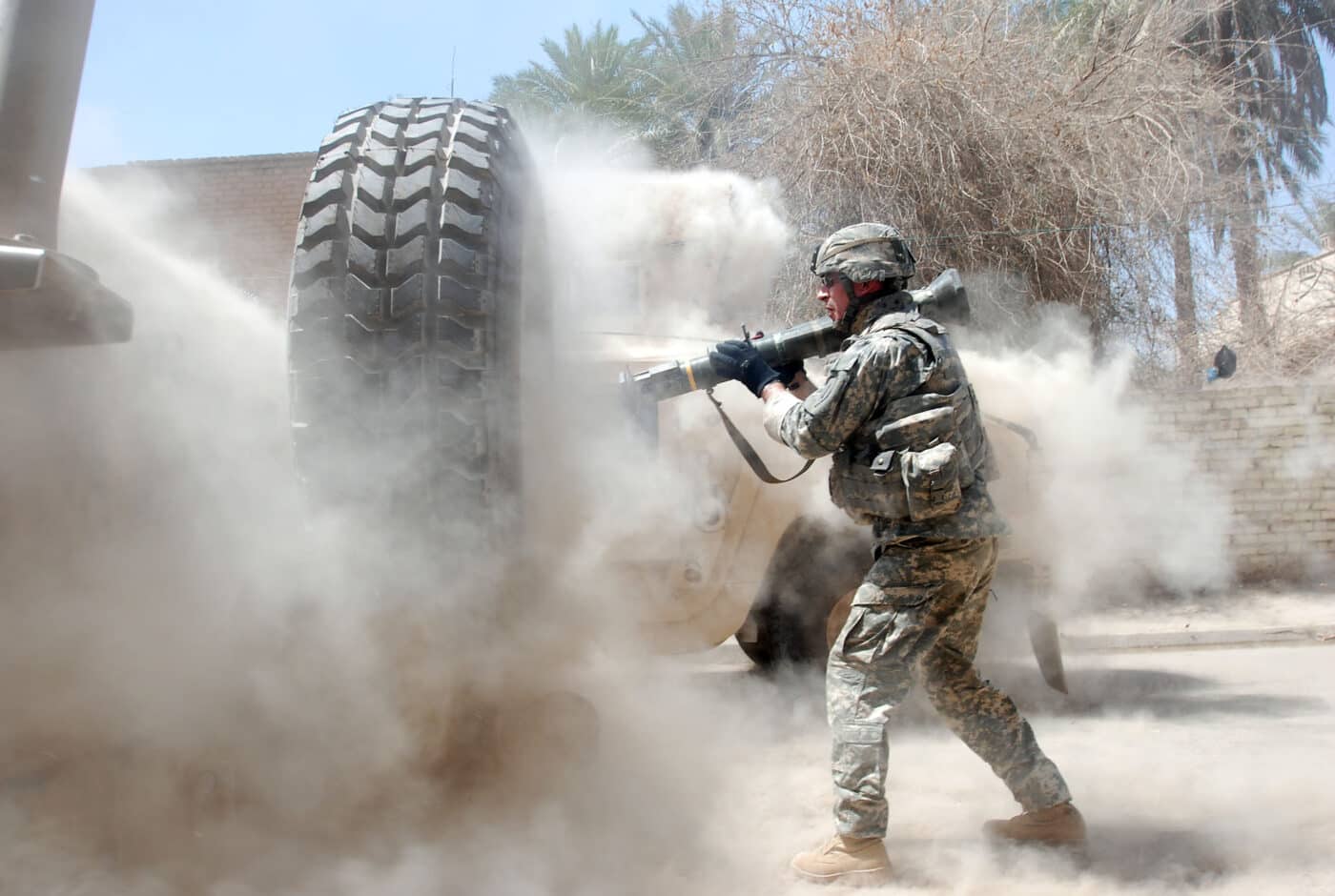
The man-portable anti-tank weapon has remained in the American military arsenal since the end of the Cold War, yet during the Iraq War, the AT4 was found that it was ill-suited to the urban combat conditions that the American warfighters faced, and orders for the weapon had been suspended. Currently, U.S. military forces are adopting the AT4 CS variant.
The AT4 in Popular Culture
The AT4 certainly doesn’t have the fame of the Soviet-designed RPG-7, yet the Swedish anti-tank weapon has still achieved a notable presence in popular culture. It has been seen in a couple of dozen movies, beginning with 1990’s RoboCop 2 and has since been seen in such releases as Escape From L.A., Jarhead, Terminator Salvation, Mission: Impossible — Fallout and The Outpost. It has also made appearances in a number of TV shows including Stargate: SG-1, Revolution and Falling Skies.

The man-portable weapon has been a video game staple for the past two decades — although some games, such as Ghost Recon, Half-Life 2 and Call of Duty: Modern Warfare 2 depicted it as being reloadable. However, it is correctly seen as a single-shot, “one-and-done” weapon in the Battlefield series, and most recently Insurgency: Sandstorm.
Owning/Collecting the AT4
In late 2012, multiple media outlets, including The Los Angeles Times, reported that two AT4 “rocket launchers” were among the “weapons” turned in as part of a gun buy-back program. It was an example of sensationalist reporting that only served to highlight how little many mainstream reporters know about firearms, but also how the reporters failed to do their due diligence and research.
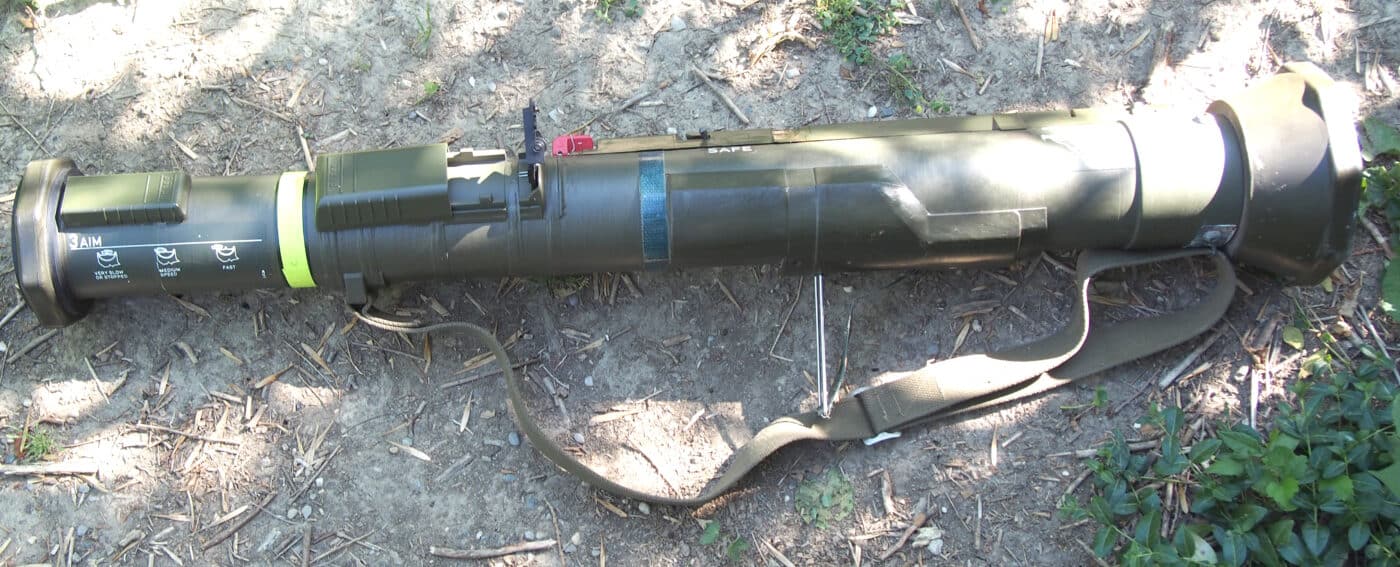
The reports suggested that “the rocket launchers didn’t have the technical parts it needed to actually discharge a projectile. Neither had rockets with them.“
What was missing from the stories is that these are single-shot/disposable weapons. In other words, once fired, they’re essentially just fiberglass/plastic tubes. However, at least one report about the AT4 and the LAPD’s buyback added, “Police are going to look into whether the U.S. military reported them stolen.“
This type of reporting borders on fear-mongering, but it wasn’t an isolated report about an AT4 showing up at such a gun buyback. Multiple outlets in San Francisco also jumped to the wrong conclusions about the Swedish-made anti-tank weapon five years later, when one was handed in at another buy-back in the Golden State. Images were even shared on social media of the AT4 for full effect.
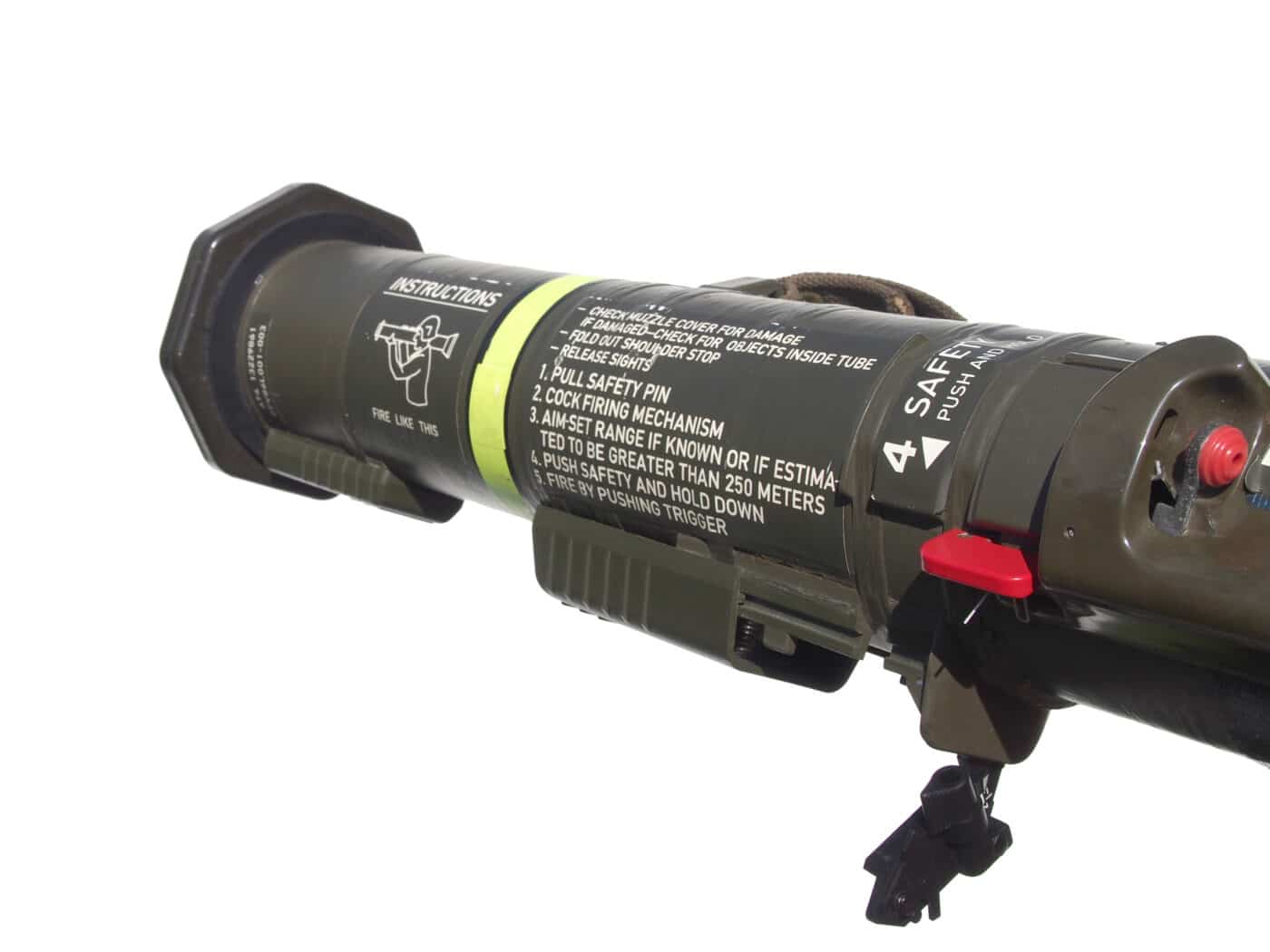
And in what most certainly wasn’t an “April Fool’s Joke,” NPR reported on April 1 of this year that a pair of AT4 rocket launchers were found in a trash can near a California school. This report ominously quoted a Riverside County Sheriff’s Department official who stated, “Although the launcher tubes are illegal to possess, they were not a safety hazard and there was no threat to the community.“
NPR’s report suggested that “rocket launchers, also known as bazookas, are considered ‘destructive devices’ under the National Firearms Act” and further stated, “Possessing a destructive device is illegal in California, if it can be proven in court who it belongs to and that the person knew it was a destructive device.“
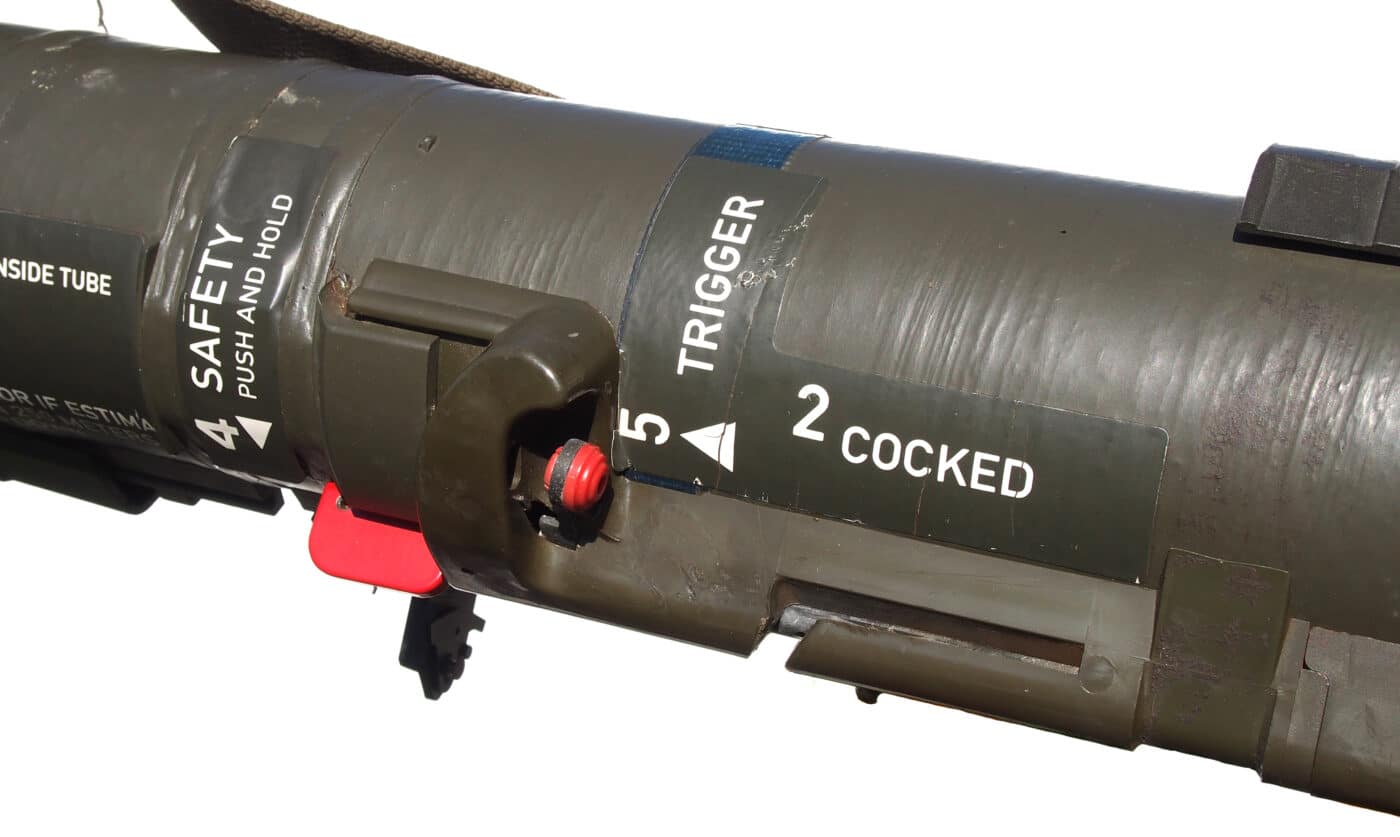
That could certainly fall into the category of irresponsible reporting, as it isn’t true. The launcher tubes aren’t actually illegal to possess in California, and while rocket launchers are considered destructive devices, these weren’t operational! How this passed editors and fact-checkers is simply amazing.
Can You Own an AT4?
The short answer: yes. In fact, once the weapon is fired, the AT4 can’t be reloaded and certainly wouldn’t fall under ATF’s definition of a destructible device. Obviously, it goes without saying that there is no such thing as a legal live AT4. Those are for military sales only, and it would be impossible for one to be offered on the civilian market legally.
A fired tube is as noted, just a plastic tube. In many cases, these show up for sale on such sites as GunBroker.com following test fire exercises as soldiers or other military personnel are actually allowed to keep these as souvenirs. However, because these aren’t used in exercises on a regular basis, they’re not exactly common, and as a result prices have steadily increased in recent years.
All that said, while there may be no federal laws — as with any deactivated firearm, it is best to ensure that the item is still legal to own. That is where the Riverdale Sheriff’s Office may have gotten confused — as some communities still can ban “non-functional replicas” or other non-functional weapons that could be mistaken for a live firearm. In addition, common sense should be applied regarding how an AT4 is displayed.
Editor’s Note: Be sure to check out The Armory Life Forum, where you can comment about our daily articles, as well as just talk guns and gear. Click the “Go To Forum Thread” link below to jump in!
Join the Discussion
Continue Reading
Did you enjoy this article?

 316
316






